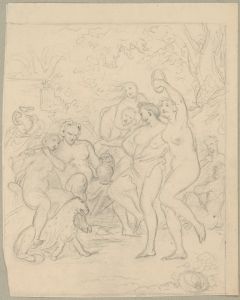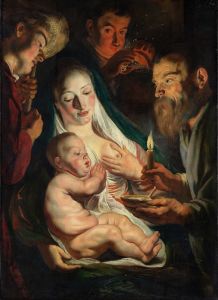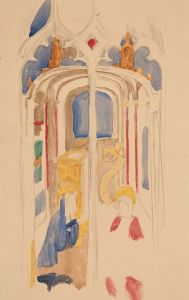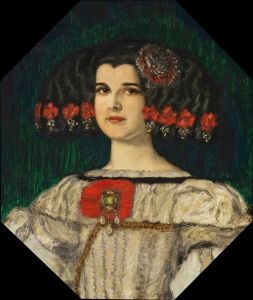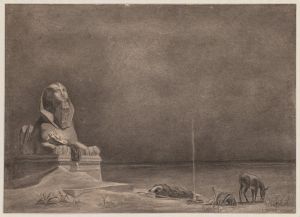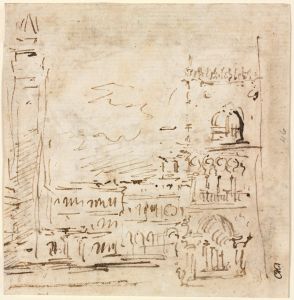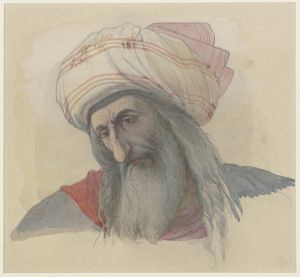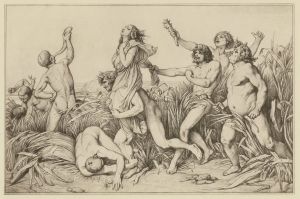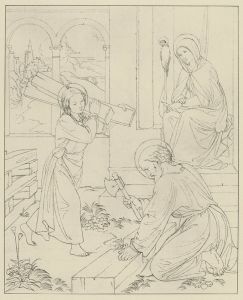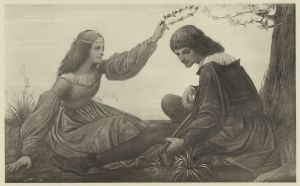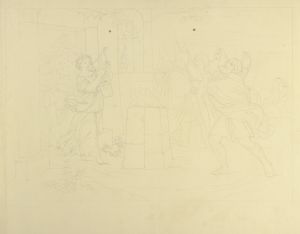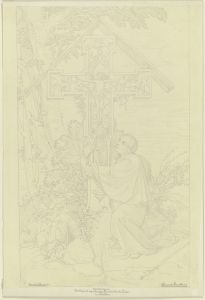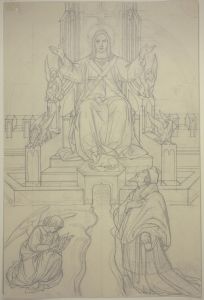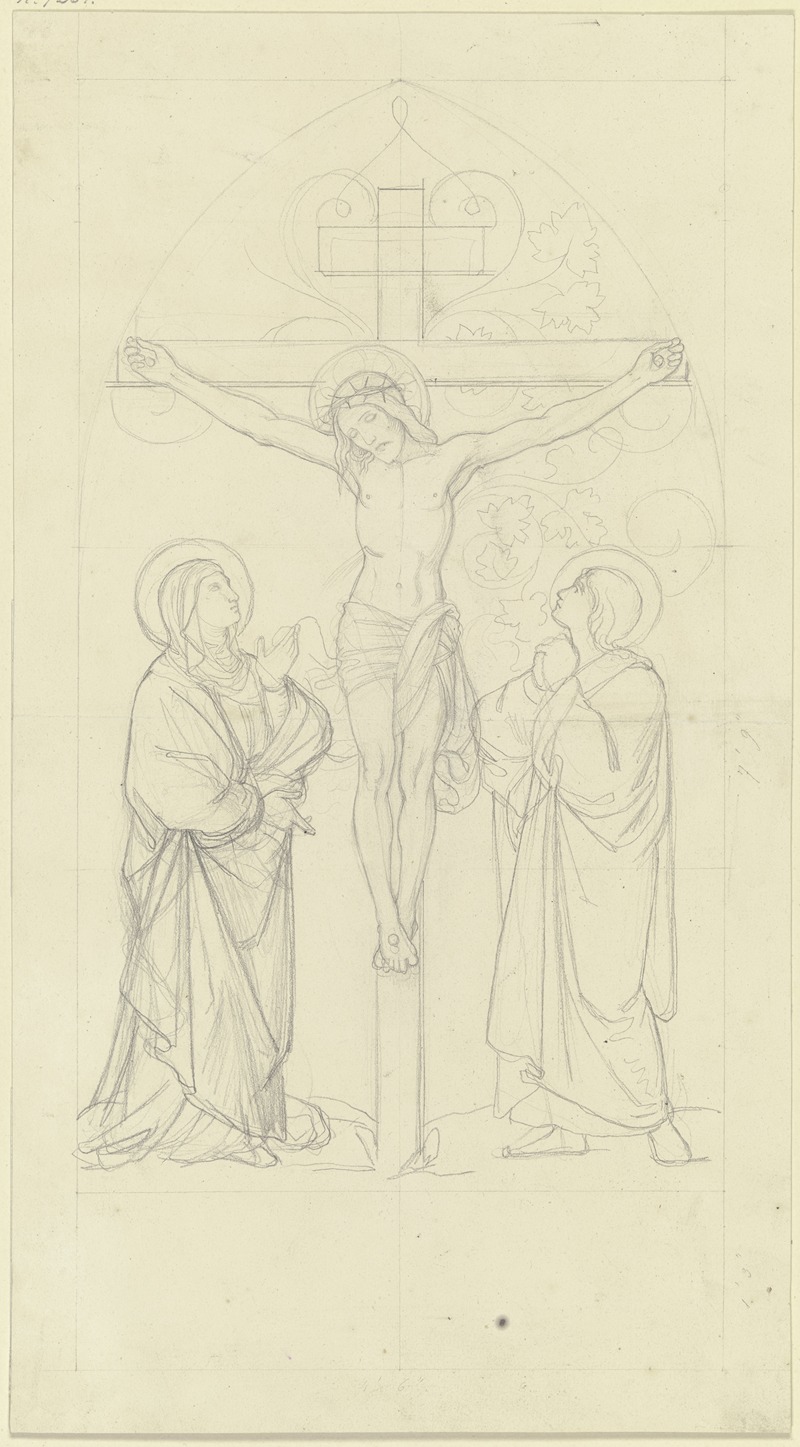
Christus am Kreuz zwischen Maria und Johannes
A hand-painted replica of Eduard von Steinle’s masterpiece Christus am Kreuz zwischen Maria und Johannes, meticulously crafted by professional artists to capture the true essence of the original. Each piece is created with museum-quality canvas and rare mineral pigments, carefully painted by experienced artists with delicate brushstrokes and rich, layered colors to perfectly recreate the texture of the original artwork. Unlike machine-printed reproductions, this hand-painted version brings the painting to life, infused with the artist’s emotions and skill in every stroke. Whether for personal collection or home decoration, it instantly elevates the artistic atmosphere of any space.
Eduard von Steinle was a prominent 19th-century German painter, known for his contributions to the Nazarene movement, which sought to revive honesty and spirituality in Christian art. One of his notable works is "Christus am Kreuz zwischen Maria und Johannes" (Christ on the Cross between Mary and John). This painting exemplifies Steinle's dedication to religious themes and his ability to convey deep spiritual emotion through his art.
"Christus am Kreuz zwischen Maria und Johannes" depicts the crucifixion of Jesus Christ, a central event in Christian theology. In this painting, Steinle captures the moment when Jesus is on the cross, flanked by two significant figures: Mary, his mother, and John the Apostle, one of his closest disciples. This scene is a poignant representation of the sorrow and devotion surrounding the crucifixion, a theme that has been explored by many artists throughout history.
Steinle's work is characterized by its detailed composition and the emotional depth of its subjects. In "Christus am Kreuz zwischen Maria und Johannes," he employs a style that reflects the influence of the Nazarene movement, which was inspired by early Renaissance art and sought to infuse contemporary works with a sense of piety and devotion. The Nazarenes often drew upon biblical narratives, and Steinle was no exception, using these stories as a foundation for his artistic expression.
The painting is notable for its use of color and light, which Steinle skillfully employs to highlight the central figures and convey the somber mood of the scene. The figures of Mary and John are depicted with expressions of profound grief and compassion, emphasizing their roles as witnesses to the crucifixion and their deep connection to Jesus. Steinle's attention to detail is evident in the rendering of their garments and the subtle interplay of light and shadow, which adds to the overall impact of the composition.
Steinle's religious works, including "Christus am Kreuz zwischen Maria und Johannes," were highly regarded during his lifetime and contributed to his reputation as a leading figure in religious art. His ability to convey spiritual themes with sincerity and depth resonated with audiences and aligned with the broader goals of the Nazarene movement, which sought to counteract the perceived materialism and lack of spirituality in contemporary art.
While specific details about the creation and current location of "Christus am Kreuz zwischen Maria und Johannes" may not be widely documented, the painting remains an important example of Steinle's artistic legacy. It reflects his commitment to exploring religious themes and his skill in bringing these narratives to life through his art.
Overall, Eduard von Steinle's "Christus am Kreuz zwischen Maria und Johannes" stands as a testament to his dedication to religious art and his ability to capture the emotional and spiritual essence of biblical events. Through his work, Steinle continues to inspire appreciation for the depth and complexity of religious narratives and their enduring impact on art and culture.





